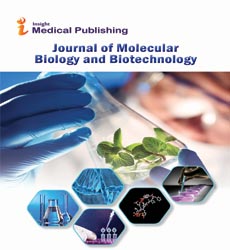Genetic, Molecular and Cellular Basis on Morphogenesis
Ishigamori Azumi*
Department of Molecular Biology, University of Calicut, Kerala, India
- *Corresponding Author:
- Ishigamori Azumi
Department of Molecular Biology,
University of Calicut,
Kerala,
India,
E-mail: aswositm24@eis.hokudai.ac.ni
Received Date: October 05, 2021; Accepted Date: October 19, 2021; Published Date: October 26, 2021
Citation: Azumi I (2021) Genetic, Molecular and Cellular Basis on Morphogenesis. J mol Biol Biotech. Vol. 6 No.5:004.
Description
Morphogenesis (from the Greek morphê shape and beginning creation, in a real sense "the age of structure") is the natural interaction that causes a cell, tissue or organic entity to foster its shape. It is one of three central parts of formative science alongside the control of tissue development and designing of cell separation.
The interaction controls the coordinated spatial dissemination of cells during the early stage advancement of a life form. Morphogenesis can occur likewise in a developed living being, for example, in the typical upkeep of tissue homeostasis by immature microorganisms or in recovery of tissues after harm. Malignancy is an illustration of exceptionally strange and obsessive tissue morphogenesis. Morphogenesis additionally depicts the improvement of unicellular life frames that don't have an undeveloped stage in their life cycle. Morphogenesis is fundamental for the advancement of new structures.
Morphogenesis is a mechanical interaction including powers that produce mechanical pressure, strain, and development of cells, and can be incited by hereditary projects as per the spatial designing of cells inside tissues.
Genetic and Molecular Basis
A few sorts of atoms are significant in morphogenesis. Morphogens are dissolvable atoms that can diffuse and convey signals that control cell separation by means of focus slopes. Morphogens commonly act through restricting to explicit protein receptors. A significant class of atoms engaged with morphogenesis is record factor proteins that decide the destiny of cells by collaborating with DNA. These can be coded for by ace administrative qualities, and either initiate or deactivate the record of different qualities; thusly, these optional quality items can control the statement of then again different qualities in an administrative course of quality administrative organizations. Toward the finish of this course are classes of atoms that control cell practices like cell movement, or, all the more by and large, their properties, like cell grip or cell contractility. For instance, during gastrulation, bunches of immature microorganisms switch off their phone to-cell grip, become transient, and take up new situations inside an undeveloped organism where they again enact explicit cell bond proteins and structure new tissues and organs. Formative flagging pathways ensnared in morphogenesis incorporate Wnt, Hedgehog, and ephrins.
Cellular Basis
At a tissue level, disregarding the method for control, morphogenesis emerges due to cell multiplication and motility. Morphogenesis likewise includes changes in the cell structure or how cells interface in tissues. These progressions can bring about tissue stretching, diminishing, collapsing, attack or partition of one tissue into unmistakable layers. The last case is frequently alluded as cell arranging. Cell "figuring out" comprises of cells moving to sort into groups that boost contact between cells of a similar kind. The capacity of cells to do this has been proposed to emerge from differential cell bond by Malcolm Steinberg through his differential grip speculation. Tissue partition can likewise happen through more sensational cell separation occasions during which epithelial cells become mesenchymal (see Epithelial–mesenchymal progress). Mesenchymal cells regularly leave the epithelial tissue as an outcome of changes in cell cement and contractile properties. Following epithelial-mesenchymal change, cells can relocate away from an epithelium and afterward partner with other comparable cells in a new location. In plants, cell morphogenesis is firmly connected to the compound organization and the mechanical properties of the cell divider. Cancer Morphogenesis
Malignancy can result from interruption of typical morphogenesis, including both growth arrangement and growth metastasis. Mitochondrial brokenness can bring about expanded disease hazard due to upset morphogen flagging.
Virus Morphogenesis
During gathering of the bacteriophage (phage) T4 virion, the morphogenetic proteins encoded by the phage qualities connect with one another in a trademark arrangement. Keeping a suitable equilibrium in the measures of every one of these proteins created during viral disease seems, by all accounts, to be basic for ordinary phage T4 morphogenesis. Phage T4 encoded proteins that decide virion structure incorporate major primary parts, minor underlying parts and non-underlying proteins that catalyze explicit strides in the morphogenesis sequence. Phage T4 morphogenesis is separated into three free pathways: the head, the tail and the long tail filaments as point by point by Yap and Rossman.
Open Access Journals
- Aquaculture & Veterinary Science
- Chemistry & Chemical Sciences
- Clinical Sciences
- Engineering
- General Science
- Genetics & Molecular Biology
- Health Care & Nursing
- Immunology & Microbiology
- Materials Science
- Mathematics & Physics
- Medical Sciences
- Neurology & Psychiatry
- Oncology & Cancer Science
- Pharmaceutical Sciences
